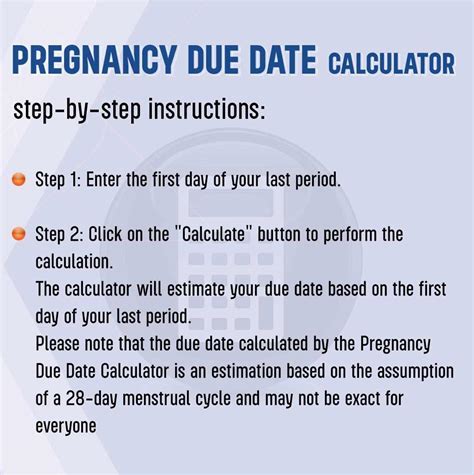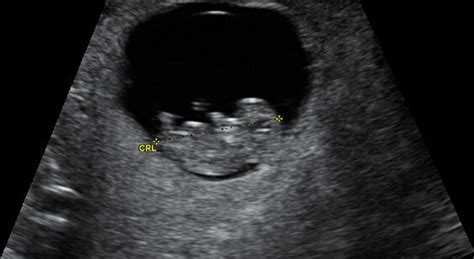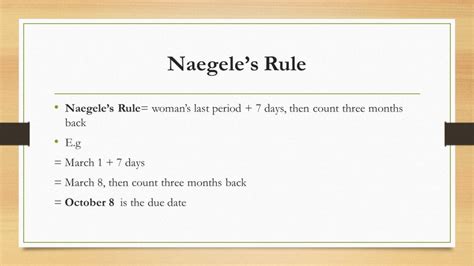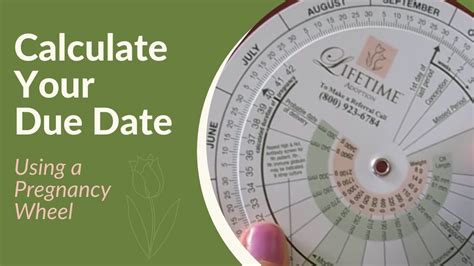Intro
Calculate your babys arrival date with ease using our 5 ways to calculate due date, including ovulation tracking, ultrasound dating, and more pregnancy calculation methods for an accurate estimated due date and a healthy pregnancy journey.
Calculating the due date of a pregnancy is a crucial aspect of prenatal care, as it helps expectant mothers and healthcare providers prepare for the birth of the baby. Knowing the due date also allows for better planning and management of pregnancy-related appointments, tests, and procedures. In this article, we will delve into the various methods used to calculate the due date, highlighting their importance and providing insights into the benefits and limitations of each approach.
The calculation of the due date is based on the average length of a human pregnancy, which is approximately 40 weeks from the first day of the last menstrual period (LMP). However, this can vary from woman to woman, and several factors can influence the accuracy of due date calculations. These factors include the regularity of menstrual cycles, the timing of ovulation, and the presence of any underlying medical conditions.
Understanding the due date is essential for expectant mothers, as it enables them to track their pregnancy progress, identify potential complications early, and make informed decisions about their care. Moreover, knowing the due date helps healthcare providers schedule necessary tests and appointments, ensuring that the mother and baby receive the best possible care. In the following sections, we will explore the different methods used to calculate the due date, including their advantages and disadvantages.
Introduction to Due Date Calculations

Due date calculations are based on the assumption that a typical pregnancy lasts for approximately 280 days (or 40 weeks) from the first day of the LMP. However, this can vary depending on individual factors, such as the length of the menstrual cycle and the timing of ovulation. The most common methods used to calculate the due date include the LMP method, ultrasound dating, and the conception date method.
Understanding the Last Menstrual Period (LMP) Method
The LMP method is the most widely used approach to calculate the due date. This method assumes that ovulation occurs on day 14 of a 28-day menstrual cycle, and that the fertilized egg implants in the uterus approximately 6-10 days after ovulation. By counting forward 280 days from the first day of the LMP, healthcare providers can estimate the due date.Methods for Calculating Due Date

There are several methods used to calculate the due date, each with its own advantages and limitations. These methods include:
- Last Menstrual Period (LMP) method: This method is based on the first day of the LMP and assumes a regular 28-day menstrual cycle.
- Ultrasound dating: This method uses ultrasound technology to measure the size of the fetus and estimate the due date.
- Conception date method: This method calculates the due date based on the date of conception, which can be determined through various means, such as ovulation predictor kits or fertility tracking apps.
- Naegle's rule: This method involves counting back 3 months from the first day of the LMP and adding 7 days to estimate the due date.
- Johnson's rule: This method involves counting back 3 months from the first day of the LMP and adding 9 days to estimate the due date.
Benefits and Limitations of Each Method
Each method for calculating the due date has its own benefits and limitations. For example, the LMP method is widely used and easy to calculate, but it assumes a regular menstrual cycle and may not be accurate for women with irregular cycles. Ultrasound dating, on the other hand, provides a more accurate estimate of the due date, but it may not be available or necessary for all women.Ultrasound Dating and Its Role in Due Date Calculations

Ultrasound dating is a crucial tool in due date calculations, particularly for women with irregular menstrual cycles or those who are unsure of their LMP. This method uses ultrasound technology to measure the size of the fetus and estimate the due date. Ultrasound dating can be performed at various stages of pregnancy, including the first trimester, second trimester, and third trimester.
First Trimester Ultrasound Dating
First trimester ultrasound dating is typically performed between 7-10 weeks of gestation. This method is highly accurate, with a margin of error of approximately 3-5 days. First trimester ultrasound dating is particularly useful for women with irregular menstrual cycles or those who are unsure of their LMP.Conception Date Method and Its Applications

The conception date method calculates the due date based on the date of conception. This method can be useful for women who have undergone fertility treatments, such as in vitro fertilization (IVF), or those who have used ovulation predictor kits to determine the date of conception.
Benefits of the Conception Date Method
The conception date method provides a more accurate estimate of the due date, particularly for women who have undergone fertility treatments. This method also allows for better planning and management of pregnancy-related appointments and tests.Naegle's Rule and Johnson's Rule in Due Date Calculations

Naegle's rule and Johnson's rule are two methods used to calculate the due date. Naegle's rule involves counting back 3 months from the first day of the LMP and adding 7 days, while Johnson's rule involves counting back 3 months from the first day of the LMP and adding 9 days. These methods are less accurate than the LMP method or ultrasound dating but can provide a rough estimate of the due date.
Limitations of Naegle's Rule and Johnson's Rule
Naegle's rule and Johnson's rule have several limitations, including the assumption of a regular menstrual cycle and the lack of accuracy compared to other methods. These methods should only be used as a rough estimate of the due date and should be confirmed with other methods, such as ultrasound dating.Practical Applications of Due Date Calculations

Due date calculations have several practical applications, including:
- Planning and management of pregnancy-related appointments and tests
- Identification of potential complications and risks
- Determination of the best course of treatment for any underlying medical conditions
- Preparation for the birth of the baby, including childbirth education and breastfeeding support
Importance of Accurate Due Date Calculations
Accurate due date calculations are essential for ensuring the best possible outcomes for both the mother and baby. Inaccurate due date calculations can lead to premature birth, postdate pregnancy, and other complications.Conclusion and Final Thoughts

In conclusion, calculating the due date is a crucial aspect of prenatal care, and several methods are available to estimate the due date. Understanding the benefits and limitations of each method is essential for ensuring accurate due date calculations and providing the best possible care for expectant mothers. By using a combination of methods, including the LMP method, ultrasound dating, and the conception date method, healthcare providers can provide accurate and personalized care for each woman.
We invite you to share your thoughts and experiences with due date calculations in the comments below. Have you used any of the methods mentioned in this article? What were your experiences with due date calculations during your pregnancy? Share your story and help others understand the importance of accurate due date calculations.
What is the most accurate method for calculating the due date?
+The most accurate method for calculating the due date is ultrasound dating, particularly in the first trimester.
Can I use the conception date method if I don't know the exact date of conception?
+Yes, you can use the conception date method even if you don't know the exact date of conception. However, this method may not be as accurate as other methods, such as ultrasound dating.
What are the risks of inaccurate due date calculations?
+Inaccurate due date calculations can lead to premature birth, postdate pregnancy, and other complications. It's essential to use a combination of methods to ensure accurate due date calculations.
